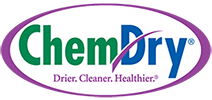Dangers of Untreated Mould In Your Home
Mould is a fungus that can be a dangerous irritant living in your home. It can spread quickly and has the potential to cause a variety of health concerns including respiratory issues. In worst case scenarios, mould spores can produce life-threatening toxins that nobody would want their family or pets around. Mould should be removed as quickly as possible before it starts to spread in large quantities.
Moisture Can Be A Key Sign of Mould
Moist and damp conditions are often a breeding ground for mould growth. Humidity also helps the incubation and spread of mould. Knowing where to look can help you spot mould growth sooner and protect your home and health.
The most common areas of the home for mould growth include:
- Lofts and attics
- Carpets
- Wallpaper
- Bathrooms and showers
- Basements and cellars
As a tip, make sure to regularly keep an eye out for water spots on any wall, floor or fabric around the home. Consult a professional if you catch any potential water damage to make sure you prevent mould growth.
I See Mould In My Home, Now What?
There are a few simple steps you can take if you suspect mould in your home:
- Find the source of the moisture. Because mould growth often occurs when there is a leak, finding and cutting off the source of the dampness is a top priority.
- Keep the area as dry as possible with ventilation. Maximising airflow through open windows, doors, and a fan can help dry out the area and slow mould growth.
- Try using a dehumidifier to further remove moisture from the room.
- Check your air conditioning system is properly maintained to prevent it from collecting or spreading mould.
- Call a professional to detect and remove the mould from your home.
How Chem-Dry Mould Removal Works
Professional assistance is highly recommended for mould removal, here is our process:
- First, the Chem-Dry technician will locate the source of the mould and advise you if a third party is needed such as a plumber in the case of certain leaks.
- We then dry the area with insurance approved drying humidifiers so mould can’t grow.
- In certain cases where the air is contaminated, we also use a HEPA-air filtration filter to remove airborne mould spores.
- The mould removal cleaning process takes place next.
- Finally, your technician will use a mould inhibitor to treat the affected area helping to prevent re-growth.
Taking fast action is the best step you can take if you suspect mould growth in your home. Our mould removal and remediation technicians can quickly diagnose, dry, and clean the area giving you and your family back the clean, healthy indoor living space you need to thrive.
